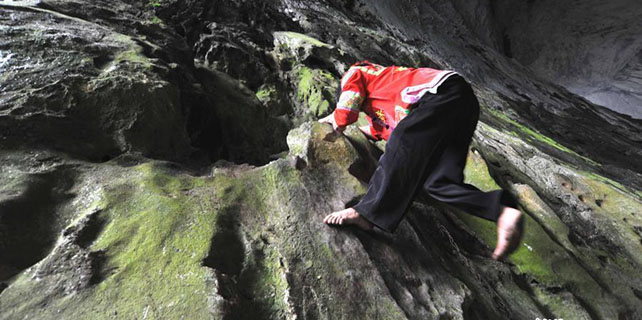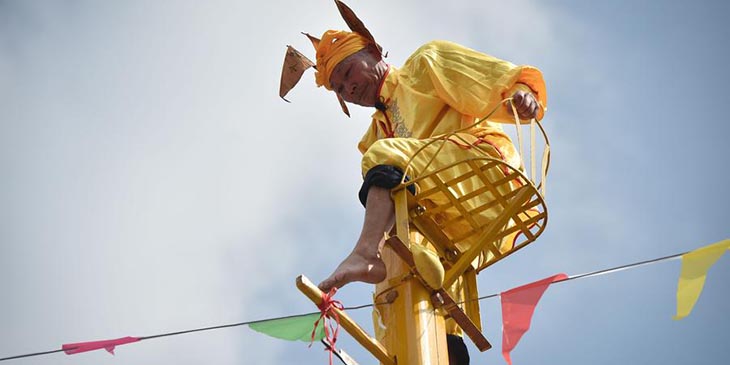Is winter coming for steel industry?
URUMQI - Crack. Loaded with heavy snow, a willow branch snaps on to the roof of an SUV parked outside Yili Iron and Steel, a steelworks in northwest China.
This year winter is set to be colder than ever, and the same could probably be said for the Chinese steel industry.
Oversupply in China's steel sector has caused years of plunging prices and factory shutdowns amid a sluggish economy.
Last year, Yili Iron and Steel, northwest China's Xinjiang Uygur autonomous region, registered a loss of 600 million yuan ($87 million). Many other major Chinese steel manufacturers faced similar difficulties. Wuhan Iron and Steel, China's first specialist steel maker, posted a net loss of 7.5 billion yuan ($1.1 billion) for its listed subsidiary in 2015.
Despite a recent rebound in steel prices and market demand, oversupply still hinders the industry.
The second day after hard snow, Yili Iron and Steel turned off a 530 cubic meter boiler. This marks the beginning of attempts to reduce output every winter.
"Winter in Xinjiang is long and cold, leading to a sharp shrink in market demand from the construction sector. So capacity-cutting becomes routine for local steel makers," said Yuan Zhizhong, deputy chief engineer of the group.
The capacity-cutting period can last up to four months.
Across China, steel makers are encouraged or forced to shut down or reduce output to shed unnecessary production.
China has shut down several steel plants with a total capacity of over 90 million tons over the past five years.
It plans to further reduce crude steel output by 100 million to 150 million tons by 2020, according to the ministry's 2016-2020 plan.
But the "iron men" on the factory floor at Yili Iron and Steel are much more optimistic.
"Do you know at what temperature molten iron turns into steel?" asked Bahnur, a steel worker at Yili, while sending cement and other auxiliary materials through a conveyor belt. "1,600 degrees Celsius."
Proficient in operations, Bahnur has gone through ups and downs since he started at the company in 1994.
"Today things are much better than 18 years ago," he said.
Having been in the red for five years, the then-state-owned steel maker stepped into a new era in 1998, becoming a mixed ownership company using an employee stock ownership plan.
"Back then, nobody could see the road ahead," Bahnur said.
Even capacity-cutting for a third of the year, Yili Iron and Steel still has 86-percent capacity utilization, much higher than the national average of 67 percent.
Capacity utilization refers to the extent an enterprise uses its full production capacity, and is an important index to measure the strength of any given operation.
The company dismantled lots of old equipment five years ago, and was the first to complete targets for outdated production capacity in Xinjiang, as per the twelfth five-year plan.
It also decided not to continue with the second phase of a new production line, which had been approved by the government.
"Market demand for steel in Xinjiang was no more than 10 million tons last year, but total capacity exceeded 20 million," Yuan said, "The consequences would be disastrous if we continued."
As the government continues to push modernization and the green industry, traditional steel makers must speed up transformation and target a narrower market.
Xingtai Iron and Steel, China's first wire rod producer, successfully raised its market share by focusing on high-end products such as cold heading steel and tyre cord steel.
"We aim for high-tech products. In this way, even a small rise in market share brings a big cake, because these products have higher added value," Yuan Xixian, chairman of Xingtai Iron and Steel in north China's Hebei Province, told Xinhua.
"With greater efforts in asset-restructuring and cutting-capacity, we expect the steel market in Xinjiang to hit a turning point in the second half of next year," said Hu Hui, president of Yili Iron and Steel.
Yili is still sitting on losses in the first nine months, but at a much slower pace. The group expects to achieve a 60-percent reduction in losses this year. "We have gone through the toughest time yet, but we have seen the silver lining of recovery," Hu said.
A new round of heavy snow is set to hit Xinjiang but, as the old Chinese proverb says, if winter comes, can spring be far behind?
















